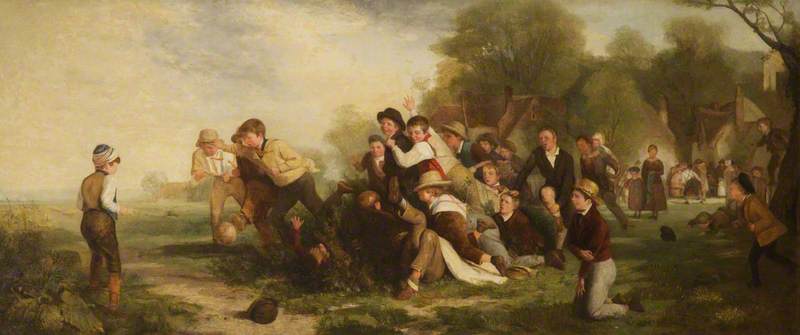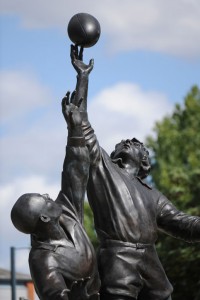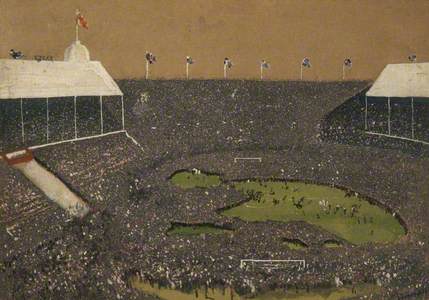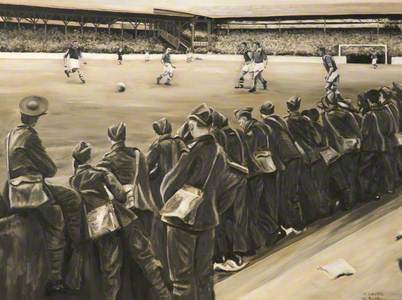The Football League is over 130 years old, but remarkably the game's roots in Britain probably go back over a thousand years.
By about 1170 the game was popular enough for a cleric working for Thomas Becket, the Archbishop of Canterbury, to mention it in a description of London: 'After dinner all the youths of the city go out into the fields for the very popular game of ball.'
Football's growing popularity worried successive kings, who were concerned that young men were more interested in wasting their time playing football when they should have been practising useful archery skills.
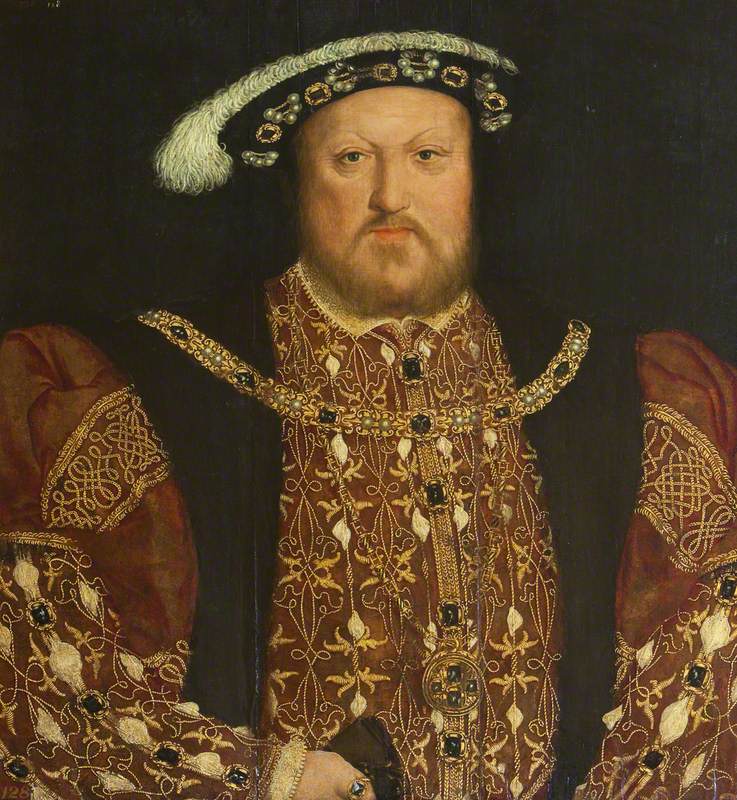
Image credit: National Trust Images
Hans Holbein the younger (c.1497–1543) (after)
National Trust, Blickling HallEven sports-mad Henry VIII tried to ban it, despite owning a pair of football boots himself.
In spite of this opposition, football's popularity persisted. Players, using hands and feet, would attempt to smuggle a ball into their opponents' goal. Games could involve hundreds or thousands of players. Serious injuries and deaths were not uncommon.
By the beginning of the nineteenth century, huge games were being played throughout Britain every Shrove Tuesday. Teams competed in the streets and countryside with few rules and goals often miles apart. The resulting scrums bore little resemblance to football today.
Things began to get more recognisable when the Football Association (FA) was formed in 1863 in England, and the Scottish equivalent in 1873
The first fixed laws of football – 'football as we know it' according to the FA – were drawn up in 1863. At first, any player ahead of the ball was ruled offside, but changes in 1866 allowed a passing game to develop.
Goal kicks were introduced in 1869 and corner kicks in 1872. Later that year the first official international fixture was played – between Scotland and England.
In March 1888 William McGregor, club secretary of Aston Villa, suggested that the biggest clubs should play each other regularly. That September, the first Football League season kicked off.
Preston North End's 'Invincibles' claimed the title that season, beating a field including Villa, West Bromwich Albion, Everton and Notts County.
Unlike today, players' wages were capped and the Professional Footballers' Association was created in 1907 to campaign for better conditions.
Despite the outbreak of the First World War, the 1914/1915 Football League season and FA Cup went on as normal, though matches were suspended at the end of it.
Sherlock Holmes's creator Arthur Conan Doyle had also played in goal for Portsmouth, and he called for footballers to join the armed forces. Many did, including those who signed up to the 600-strong Football Battalion of the Middlesex Regiment.
The 1920s saw some record-breaking attendances. Wembley Stadium opened in 1923 and held its first FA Cup final, in which Bolton Wanderers beat West Ham 2-0. Estimates vary but around 200,000 people turned up, swarming the stadium and invading the pitch.
The outbreak of the Second World War in September 1939 again saw regular fixtures suspended. The fear of air raids, the introduction of conscription and a travel ban ensured that football matches could not continue as before.
As a result, Portsmouth can claim to have the record for holding the FA Cup for the longest period. Winners in 1939, they kept the cup throughout the wartime suspension until 1946.
In 1966, England beat West Germany in the World Cup final at Wembley Stadium.
A crowd of 93,000 watched a team including Bobby Moore, Bobby Charlton and Martin Peters win 4-2. Geoff Hurst's hat-trick remains the only one to be scored in the final of a World Cup, whilst none of the UK home nations have played in one since.
In the following decade, sponsorship began to appear on kits despite a ban from the FA in 1972. Kettering Town were the first to flout this ban in 1976, but were ordered to remove it. After pressure from numerous teams the FA relented in 1977, opening the gateway to a revenue stream now worth millions to modern clubs.
This painting commemorates the disaster at Hillsborough, Sheffield Wednesday's ground, on 15th April 1989. 96 Liverpool fans lost their lives in a crush on the terraces as an FA Cup semi-final was about to get underway.
British football had already endured three stadium disasters – the first at Bolton Wanderers in 1946 when 33 were killed by a collapsing barrier, and then at Rangers in 1971 when 66 were killed. In 1985, 56 people were killed in a fire at Valley Parade, Bradford City's ground.
The safety measures that were implemented following Hillsborough drastically changed football grounds over the next decades. One hugely significant change was the introduction of all-seater stadiums, which became compulsory in 1994 for all Premier League teams.
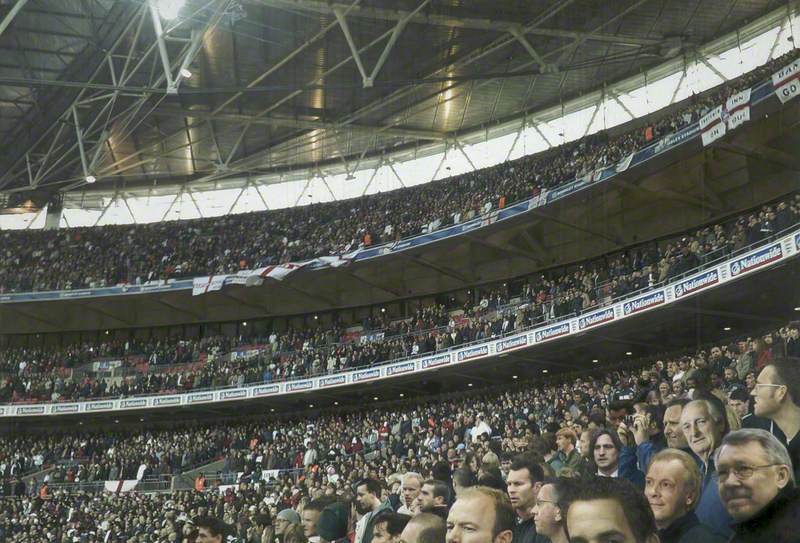
© the artist. Image credit: Central Manchester University Hospitals NHS Foundation Trust
Darren Baker (b.1976)
Central Manchester University Hospitals NHS Foundation TrustThe game changed again in the 2013/2014 season with the introduction – some say overdue – of goal-line technology. The FA declared it 'one of the biggest changes that has happened in the 150 years since we conceived the laws of the game.'
This story first appeared on the BBC Arts website. Follow the latest football news with BBC Football

